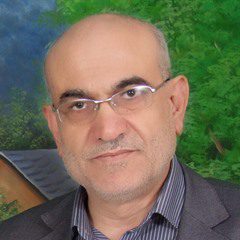Only a few months after the fighting in Syria began in earnest I wrote about the Afghan model there. Unfortunately, this has been confirmed over time. After more than two years of the Syrian revolution we can only hope that the fighting does not last as long as it has in Afghanistan.
Journalist Robert Fisk estimates that the fighting will last another 3 – 5 years, but that the regime will fall eventually. Perhaps he is being overly pessimistic in order to push for a swift political solution, but his comments need to be taken seriously; he is not biased towards the revolutionaries. On the contrary, he enters Syria with the blessing of the regime and is usually escorted by Syrian Army officers.
Obviously, no two revolutions or armed conflicts are exactly the same, but many are similar in detail, progress and even results. It is worthwhile comparing, therefore, Syria to Afghanistan.
In the first place, Iran is to Syria what the former Soviet Union was to Afghanistan. The Soviet Union was defending its international status during the Cold War; defeat was unthinkable as it would have led to a significant decline in Soviet influence. In fact, it presaged the collapse of the Union itself. In Syria, Iran is defending its long-term investment in the Syrian regime in the face of the Arab Spring revolutions in the region. Iranian officials have said that defending Damascus is like defending Tehran, which sums up how important they see support for the Assad government.
In Afghanistan, the nascent Islamic awakening was fighting against communism, and was supported by the West in the process. In Syria, it is a Shia-led regime backed by the largest Shia state which is threatening the largely Sunni revolutionaries. The Arab world also regards Iran to have crossed a red line and pressure is being applied to make it forget about expansionist dreams and regional domination.
While the Soviets occupied Afghanistan, many look at Syria and see an Iranian occupation, just as Tehran is influencing events in Iraq for the Shia government in Baghdad and Iran-backed Hezbollah controls large swathes of Lebanon and is getting involved in the fighting in Syria on the side of the regime.
Although Russia is also engaged with and in Syria, its presence is less noticeable than Iran’s, which appears to be calling the shots in every sense. The government in Tehran is estimated to have spent more than $20 billion to-date on the conflict, without which the Assad regime would have collapsed. This figure is kept from the Iranian public in case they refuse to exhaust their own scarce resources on what the foreign policy adventures of the government.
Most of the revolutionary fighters in Syria are citizens of the country, as they were in Afghanistan. Those Arab fighters who went to fight with the famed “Mujahideen” did not go with the intention of overthrowing the locals, but that has been the case in Syria. However, the anti-government fighters in Syria share a common faith and language and culture; nearly all are Sunni Arabs.
As far as external interests in the conflicts are concerned, in Afghanistan’s case it had Western backing against the communist threat. In Syria, the only significance for the West is very clearly the effect the fighting and end result will have on Israel. This is dictating the stand being taken by the West as, indeed, it does with the Russian position.
In many ways, the ethnic and sectarian diversity of Afghanistan is mirrored in Syria. Unless the powers-that-be are very careful, the long-term disintegration of the state and destruction of the state infrastructure will be the end result of the fighting in Syria. Iran may know this already but pride and arrogance prevents it from putting a halt to the bloodshed; nobody doubts that it has the influence and ability to do this.
Anyone who believes that Syria will go back to the way it was two years ago when the fighting does eventually come to an end is deluding themselves. All we can hope for is that the similarities between Syria and Afghanistan don’t include the length of the conflict, with the even more awful human toll that that would mean.
The views expressed in this article belong to the author and do not necessarily reflect the editorial policy of Middle East Monitor.











